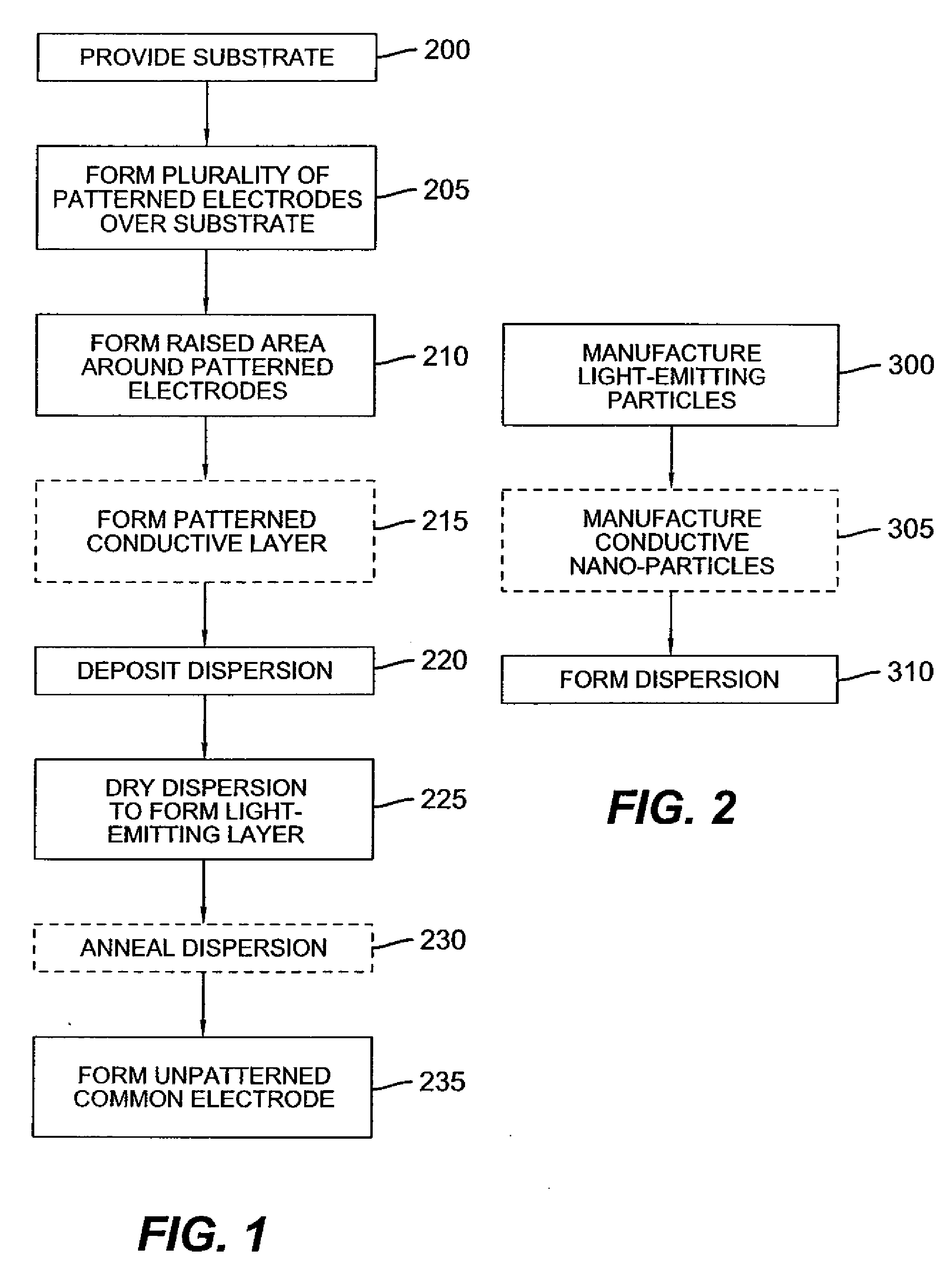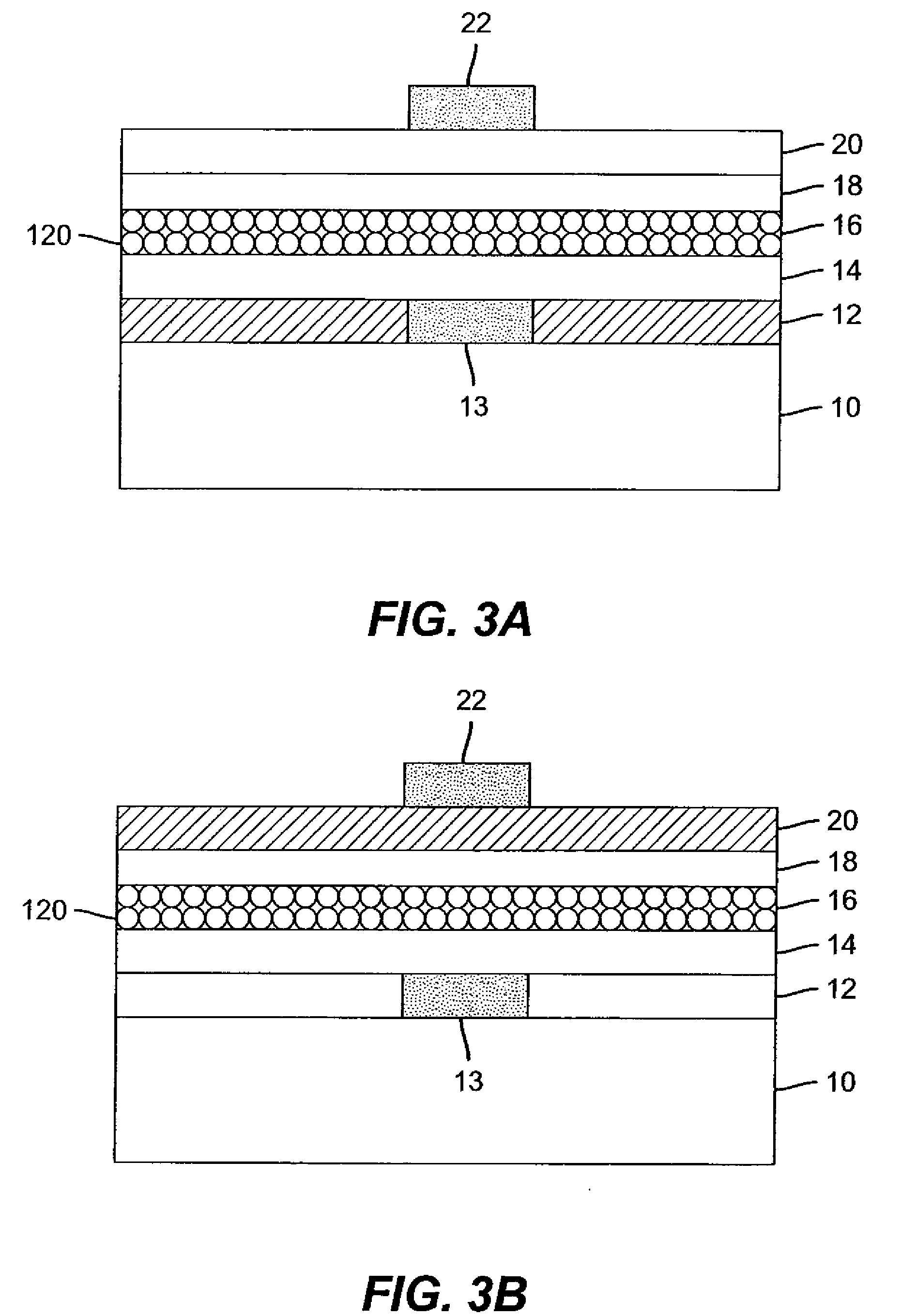One of the main challenges of manufacturing full-color displays is the patterning of light-emissive materials.
Although
shadow mask deposition of organic LED materials can work on a substrate of moderate size, e.g., 300 mm×400 mm, it becomes difficult with larger substrates or when the
pixel density becomes very high, such as in top-emitting displays.
One problem is the handling (fabrication, alignment, etc.) of such large, thin, and fragile shadow masks.
Another problem is the
thermal coefficient of expansion mismatch between the
shadow mask, through which the organic LEDs are deposited, and the underlying substrate.
This leads to misalignment of the
mask and the proper deposition area on the substrate.
Furthermore, this technique is not useful for patterning materials that are not readily evaporated.
Another challenge to top-emitting LED devices is that a transmissive top electrode is typically provided as a common electrode for many or all pixels.
Unfortunately, the most effective transmissive electrode materials, e.g., ITO and other
metal oxides, have insufficient
conductivity across the substrate, especially for large substrates.
Numerous bussing designs have been proposed, e.g., in U.S. Published
Patent Application Nos. 2004 / 0253756; 2002 / 0011783 and 2002 / 0158835, but such designs add additional complexity to the manufacturing process.
The dominant ones have high manufacturing costs; difficulty in combining multi-color output from the same
chip; efficiency of light output; and the need for high-cost rigid substrates.
Because of problems such as aggregation of the
quantum dots in the emitter layer, the efficiency of these devices was rather low in comparison with typical
OLED devices.
The efficiency was even poorer when a neat film of
quantum dots was used as the emitter layer (Hikmet et al., Journal of Applied
Physics 93, 3509-3514 (2003)).
The poor efficiency was attributed to the insulating nature of the
quantum dot layer.
These organic ligands are insulators and would result in poor
electron and hole injection onto the quantum dots.
In addition, the remainder of the structure is costly to manufacture, due to the usage of
electron and hole semiconducting
layers grown by high-vacuum techniques, and the usage of
sapphire substrates.
In general, bottom-emitting LED devices are easier to manufacture, because the transparent electrode (e.g. ITO) employed in a top-emitting device may be difficult to deposit over the charge-control and light-emitting
layers without damaging them and suffers from limited
conductivity.
However, active-matrix bottom-emitting LED devices suffer from a reduced light-emitting area (
aperture ratio), since a significant proportion (over 70%) of the substrate area can be taken up by the active-matrix components,
bus lines, etc.
Since some LED materials degrade in proportion to the
current density passed through them, a reduced
aperture ratio will increase the
current density through the
layers at a constant brightness, thereby significantly reducing the LED device's lifetime.
Thin-film, LED devices in general suffer from a loss of light trapped in various layers of the LED, substrate, or cover, thereby decreasing the efficiency of the LED device.
Hence, light emitted in a layer at a
high angle with respect to the substrate normal can internally reflect and become trapped in the high optical-index materials of the layers and transparent electrodes; thereby reducing the efficiency of the LED device.
However,
scattered light can propagate a considerable distance horizontally through the cover, substrate, or organic layers before being scattered out of the device, thereby reducing the sharpness of the device in pixelated applications such as displays.
 Login to View More
Login to View More  Login to View More
Login to View More 


